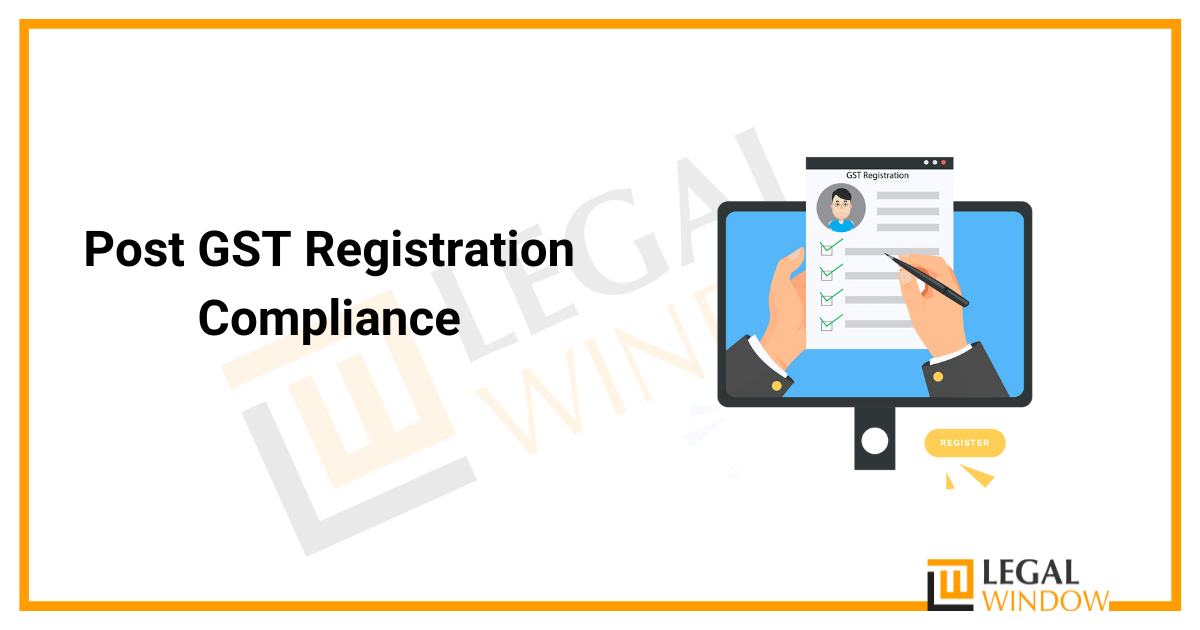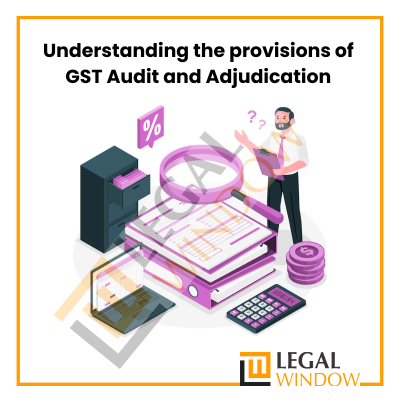
The implementation of the new GST tax system has resulted in significant tax reform in the country. The new system combines several state and central taxes into a single, fungible tax. This much-needed change improved transparency and reduced administrative burdens in the tax collecting structure. Since its inception, the new system has been excellent news for most companies, particularly small and medium-sized organisations that rely on technology to handle duties such as registration and submitting tax returns online. In this article we’ll discuss Post GST Registration Compliance and Steps after Obtaining GST Registration.
The new GST regime has mandated that enterprises follow compliance rules in order to stay compliant. The government has mandated that all companies follow the GST compliance regulations.
| Table of Content |
Key Abstract
The automation of compliance procedures to decrease mistakes and boost efficiency is a critical component of GST. GST compliance has become paperless and data-intensive, with sector-specific complexities, necessitating increased integration of tax domain expertise and technology. The digitization of tax administration, reporting, and analytics has also resulted in a new paradigm.
Compliances under GST
The Goods & Services Tax (GST) is a destination-based tax applied on goods and services used in a country. GST, as proposed by the Central Government, is a single uniform indirect tax that will regard India as a one nation with a single market. Since its introduction on July 1, 2017, compliance with GST Law has been a difficult issue for commercial entities. GST compliance has grown large, paperless, and data-intensive, with sector-specific intricacies, necessitating increasing integration of tax domain knowledge, skills, and technology. The digitization of tax administration and compliance has also resulted in a new paradigm.
The GST Council has established guidelines for how we must keep records, create invoices, report our purchases and sales, and, eventually, pay our taxes and file returns. In layman’s terms, GST compliance is defined as adhering to certain laws and regulations. Noncompliance may cost a company a lot of money. The Act also establishes harsher penalties for mistakes that result in underpayment of taxes or inaccurate credit application.
Types of GST Compliances
The GST compliance rating is a score assigned to a company by the government so that other businesses may know how compliant they are with the tax department. The new GST regime includes compliance guidelines that require enterprises to remain compliant. The government has mandated that all companies follow the GST compliance regulations. These compliance standards are classified into three types:
- Registration compliance
- Tax Invoice compliance
- Return filing compliance
Furthermore, additional compliance varies depending on the type of the business.
Let us discuss them one by one.
Compliance with GST Registration
GST registration is the first step toward compliance. Registration may be completed online at http://www.gst.gov.in. GST Registration must be done depending on a company’s yearly revenue.
- Applicable to enterprises that engage with the provision of commodities and had revenue of more than 40 lakh in the previous fiscal year.
- Applicable to companies that provide services and had a turnover of more than 20 lakhs in the preceding fiscal year.
Businesses with annual revenue of $100,000 or more are required to register for GST and comply with other GST rules. The CBIC (Central Board of Indirect Taxes and Customs) has imposed severe fines for failure to register for GST.
Compliance with Tax Invoices
Businesses registered for GST must follow invoicing compliance in order to pass on the input tax credit. Businesses are obligated to create a proforma invoice with every sale of products or services as part of their everyday business needs. These invoices must comply with regulations by include the following necessary items:
Date and invoice number
- Name of the customer
- Shipping and billing information
- Clients and taxpayers GSTIN
- Location of supply
- SAC code (Harmonized System of Nomenclature) (Services Accounting Code)
- Item specifics, such as description, quantity, unit, and total value
- Discounts and taxable value
- Tax rates and amounts
- Is GST payable on a reverse charge basis?
- The supplier’s signature
All goods must be stated on the GST invoice for a company to fulfil invoicing compliance regulations. Noncompliance with GST invoicing might result in a penalty of Rs. 10,000 or 100% of the tax owed (whichever is greater) for failing to issue an invoice and Rs. 25,000 for erroneous invoicing.
Compliance with GST returns
All registered businesses are obliged to file monthly/quarterly/yearly returns. The frequency of returns is mostly determined by the sort of company activity. GST Returns must be filed electronically using the GST website’s Returns section. The following forms are necessary to file GST Returns:
- GSTR-1 is a sales return that is filed with the government. After submitting this return, no tax is due.
- GSTR-3B is a simplified return used to disclose a tax period’s summary GST obligations. It must be self-declared weekly in order to provide summary information on all outward supplies made, input tax credits claimed, tax obligation determined, and taxes paid. It is completed by all GST-registered taxpayers.
- returns are filed yearly by GST taxpayers with a turnover of more than Rs. 2 Crores in the fiscal year, and they comprise data of outward sales supplies made, inward purchase supplies received during the previous year under various tax headings, and details of taxes payable and paid. It is a compilation of all monthly or quarterly returns (GSTR-1, GSTR-2A, GSTR-3B) filed throughout that calendar year.
Post GST Registration Compliances
Unorganized commercial enterprises will not meet deadlines. Noncompliance will always be a ticking time bomb. So, for your convenience, a few basic compliances are mentioned below.
- Display your GST number on your company’s nameplate.
- Make your GST registration certificate available to your clients at your company location.
- Make your GST number visible at your location of business.
- Give your GST number to your supplier. Insist on his uploading the invoice to his GSTR1. You will lose the input tax credit if your supplier fails to upload the invoice to GSTR-1.
- Select the appropriate invoice copy for your outside supply.
- Maintain duplicates of all Debit Notes, Credit Notes, Receipts, and Payment Vouchers, as well as any Outward Supply information. You must keep the stock register too.
- Do not forget to pay any purchase bills, asset purchase bills, or spending payments. You will lose the input tax credit you paid during inward supply.
- Determine the correct HSN code or SAC, collect output tax, and deposit it with the government.
- Determine the right point of supply for charging CGST/SGST/IGST.
- Creating an E-way bill if your shipment is worth more than Rs 50,000.
- Determine if you’re inside supplies are susceptible to the reverse charge mechanism.
- File GST returns by the deadlines. (For further information on due dates, see the reference section below.)
- Inform your personnel about the requirements. Teach them about workplace ethics.
- Review GSTR-2A on a frequent basis to ensure that your supplier is posting your invoice to the GST portal.
- Respond to departmental notices as soon as possible.
- If the circumstance calls for it, make the required changes to your GST registration.
- Remain in contact with your consultant.
- After the conclusion of the fiscal year, you must complete the GSTR Annual Return and, if required, have your GST records audited. (For further information on yearly returns, see the reference section.)
- Generate an E Invoice if your turnover exceeds the set limit.

Takeaway
The time has come for the industry to analyse the impact of GST on their operations and plan for a gradual and staged transition. The number of states from which a registered taxable person makes taxable supplies of goods and/or services multiplies the degree of compliance. Such increased compliance requirements would raise the industry’s compliance burden. As a result, the industry is encouraged to upgrade its IT infrastructure and train their tax staff in order to satisfy the GST compliance standards. The government is now soliciting input/suggestions on the Model Law. The industry should use the opportunity by submitting comments on the model GST law, ensuring that their concerns are addressed long before the final law goes into effect.
File your GST Return through Legal Window; Our Experts have expertise in filing the same and GST Registration, GST Audit and many more.
CA Pulkit Goyal, is a fellow member of the Institute of Chartered Accountants of India (ICAI) having 10 years of experience in the profession of Chartered Accountancy and thorough understanding of the corporate as well as non-corporate entities taxation system. His core area of practice is foreign company taxation which has given him an edge in analytical thinking & executing assignments with a unique perspective. He has worked as a consultant with professionally managed corporates. He has experience of writing in different areas and keep at pace with the latest changes and analyze the different implications of various provisions of the act.
Categories
- Agreement Drafting (23)
- Annual Compliance (11)
- Change in Business (36)
- Company Law (148)
- Compliance (89)
- Digital Banking (3)
- Drug License (3)
- FEMA (17)
- Finance Company (42)
- Foreign Taxation (6)
- FSSAI License/Registration (14)
- GST (118)
- Hallmark Registration (1)
- Income Tax (199)
- Latest News (34)
- Miscellaneous (164)
- NBFC Registration (8)
- NGO (14)
- SEBI Registration (6)
- Section 8 Company (7)
- Start and manage a business (20)
- Startup/ Registration (127)
- Trademark Registration/IPR (40)
Recent Posts
- Farmer Producer Companies-Major provisions under Companies Act April 26, 2024
- Detailed Analysis of Section 179 of the Companies Act, 2013 April 24, 2024
- Maximise Your Tax Savings: Power of Form 12BB April 23, 2024
About us
LegalWindow.in is a professional technology driven platform of multidisciplined experts like CA/CS/Lawyers spanning with an aim to provide concrete solution to individuals, start-ups and other business organisation by maximising their growth at an affordable cost.







